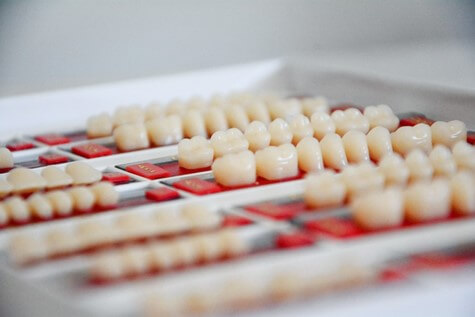When is it Too Late to Save Your Teeth?
Posted: November 12, 2021
Last Modified: November 11, 2021

We’ve written before about how it’s always worth the extra time to save your natural teeth. Teeth are a fantastic part of your body. They’re naturally stronger than any artificial component that dentists have been able to use, and they’re usually much cheaper to save than they are to replace. With that said, there are some cases where there’s just nothing that can be done for your poor pearly whites. It’s time to say goodbye and begin looking at your options for restorative dentistry. But when does “damaged” become “too far gone to save?”
The good news is that decay is a long process, and if you pay attention, you’ll have some good warning signs as to the state of your teeth. Today, we’re going to walk you through the stages of dental decay, why teeth fall out in the first place, and what can be done to replace them if you do need a few teeth removed.
Why Do Teeth Fall Out?
There are many different reasons why your teeth might decide to jump ship. Perhaps they got knocked out at hockey practice, or maybe your dog accidentally head-butted you and the crack in your tooth ran too deep to save. However, if it’s not the result of blunt force, the other most common culprit is progressing periodontal disease.
Plaque, tartar, and bacteria create periodontal disease by infecting the gums. Eventually, the gums pull away from the tooth root, creating a “pocket.” The deeper the pocket, the easier it is to collect more bacteria, food particles, and other gunk that contribute to the progression of the disease. Meanwhile, the jaw bone underneath will begin to die and shrink away from the inflammation. As it does, your teeth grow looser in their sockets, until maybe one day, you bite down too hard on an apple, and – pop! You’ve lost a tooth.
The Stages of Periodontal Decay
The very first stage of tooth decay is plaque left unattended. Plaque is a film made up of bacteria (yes, it’s as lovely as it sounds) that, over time, can harden into tartar. Tartar requires specialized cleaning from your local dentist to remove, and the longer it’s left in place, the longer it does damage to your teeth.
Enamel
Enamel is the hardest substance in your body, but even it’s not invincible. As plaque accumulates on your teeth, the acid byproducts of the bacteria start to wear away your tooth enamel. You might even notice white spots developing on the outside of your teeth, showing where the decay has really started to take off. And once your enamel is gone, there’s no way to get it back.
Dentin
Just below your enamel, there’s a substance called dentin. Dentin is full of tiny, hollow little channels that lead straight to the pulp of the tooth, which is where your nerves and blood vessels live. Once the decay has made it past the enamel, it begins digging away at your dentin. Since dentin is much softer, decay can progress much more quickly in this stage. This is also usually when you begin to develop sensitivity to hot or cold temperatures in your food or drink since there’s now a direct pipeline to your nerves.
Pulp
At the very core of your tooth, there’s pulp – tissue full of sensitive nerves and essential blood vessels. It’s what keeps your tooth alive and healthy. When decay reaches all the way down to the pulp, it can cause severe, unexpected pain when you’re chewing and when your mouth is at rest. You might notice a horrible taste in your mouth, and you might find that eating hot foods causes pain as well. Your poor tooth is hanging on, but at this stage, it might require a root canal to save.
Abscess
The bacteria reached the core of your tooth. It’s had time to grow and flourish. Now, it can begin causing a bad infection, one that can stretch to your jaw bone. You might see pus around your tooth, and you’ll notice your gums pulling away from contact with the tooth. Your gums might swell, and that swelling could extend to your face and neck, too. At this point, your tooth will likely have to be removed.
Restorative Dentistry From Dr. Elston Wong
If you’ve needed to have a few teeth removed for any reason (or if you suspect that you’ll need to have them extracted in the future), it’s time to ask your friendly family dentist about restorative dentistry options. Depending on the stage of decay and the damage that was done to your tooth, you’ll be able to choose from solutions like crowns, veneers, and dental implants to restore both form and function to your mouth.
We will provide you with evidence-based recommendations at Dr. Elston Wong Dentistry in Barrie, Ontario that are coupled with years of expertise to ensure you have a healthy, comfortable and attractive smile for years to come. Our goal is to make you so comfortable and confident that you would recommend us to your family and friends without reservation.
For more information about restorative dentistry or how you can start taking better care of your teeth today, give us a call at (705) 721-1143 or contact us online.


